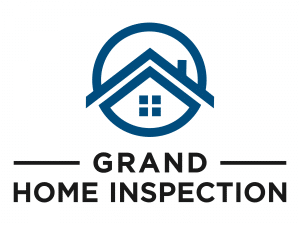Radon is a naturally occurring gas that can enter a home through the foundation, windows, etc., and is the second leading cause of lung cancer after smoking. For as harmful as it can be, I’m often surprised that information about what radon is, where it comes from, and how it can affect health isn’t widely distributed. This lack of available information has caused several misunderstandings, which I frequently hear from clients as I’m inspecting their home. I’d like to help set the record straight.
Myth 1: Radon Comes from Industrial Pollution
False. Radon is a gas that comes from the degradation of naturally occurring uranium deep within the earth. It can be found anywhere homes are built, even with no local history of industrial development. While industrial pollution can also result in harmful chemical deposits (see my PFAS blog), radon is not one of them.
Myth 2: Radon Comes from Old or Defective Furnaces
False. I hear this frequently and it is most likely that buyers are confusing radon with another harmful gas: carbon monoxide. As described above, radon is naturally occurring and can be found in homes with perfectly good heating systems.
Myth 3: A Particular Area Does or Does Not Have Radon
False. People ask me all the time if the area they’re considering is known for radon. The fact of the matter is it can show up anywhere. One house could test positive and the next one could be clear in the same neighborhood. The EPA rates counties as high, medium, and low risk, but there are no zero risk areas and radon can still be found in low risk counties. Here’s a map of Michigan counties risk levels.
Myth 4: This Home Has Been Tested and Doesn’t Need to be Tested Again
False. Radon levels rise and fall with time. Just because the last buyer tested the home does not mean radon levels are the same. The EPA actually recommends that radon testing be done for a full year in order to me the most effective. Obviously, since this isn’t practical during real estate transactions, the EPA published special guidelines for 48 hour radon monitoring with specific methodology for home sales. This 48 hour snapshot is not enough info to guarantee radon levels will always be low, but if high levels are found it is a good indicator that corrective action should be taken.
Myth 5: I Can Save Money By Testing Myself
This myth is somewhat true. Radon test kits from hardware stores do provide accurate results and are a good low cost solution for people that already own homes. There are a couple problems with using them while buying a home. DIY test kits are easy to tamper with and a seller could simply move them outside where radon levels are naturally low. Our radon monitors have motion detectors to prevent tampering. DIY kits also take a long time to get results. Radon tests take 48 hours. At this point our radon monitors can report results, but test kits still need to be shipped to a lab, which takes 2-3 days. Then you need another day or two for analysis and reporting, which can put you dangerously close to the inspection deadline. You can pay for expedited shipping and analysis, but the test is still easy to tamper with and now the cost is approaching professional monitoring.
Now that we know radon is a harmful gas, comes from deep within the earth, and is the second leading cause of lung cancer, what can be done about it? The first step is testing and we can help. If radon is found, equipment can be installed to vent it to the outside. Has your home been tested?


How WDO Inspections Protect Your Property’s Value
Many homeowners don’t consider getting a wood-destroying organism (WDO) inspection unless they are selling their home. However, these are the inspections that protect your property from depreciation. The WDO inspection benefits can never be understated. These inspections provide detailed and useful insights into your property to confirm if it’s ever been under a WDO attack. […]
How Air Quality Tests Can Pinpoint Mold in Your Home
You can’t expect anything good from mold. That’s obvious. But its adverse effects come as a surprise – both on health and at home. Mold is a pollutant affecting your home and family. When it comes to health issues, it causes respiratory issues, allergies, infections and asthma attacks. Mold is also responsible for wood decays, […]
How Seasonal Pool Inspection Can Save You Money in the Long Run
Your poolside paradise needs protection! You must have imagined a summer full of poolside relaxing moments, sipping your pina colada, and having the best time ever. But, pause this rejuvenating plan for a bit and imagine what if the blessing in disguise – your pool starts experiencing some unseen issues? Which later affects its safety […]